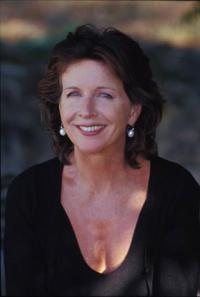Back when at least a few entertainers owned both intelligence and a sense of the fitness of things, Fred Allen, the great wit and radio comedian — in his case, not mutually contradictory terms — wrote his autobiography and titled it Treadmill to Oblivion. It is an inspired title to an inspired book, one of the points of which is that no matter what you do or how well you do it on your path in life, almost inevitably it will lead to being forgotten.
The seemingly dour but actually quite prosaic outlook expressed in that title might seem an odd introduction to Helen Fielding’s much-heralded screwball novel, Bridget Jones’s Diary. But I believe it is valid, especially for readers who have not only intelligence and a sense of the fitness of things but also a few years on them — i.e., those of us in the geezer or pre-geezer geologic strata — who might think that a novel, however hilarious, about the romantic entanglements of an unmarried, thirtysomething British woman could hold little interest for them.
Wrong. First, if you are a member of the generation that considered living together before marriage "shacking up," you will be much amused, with your treadmill-to-oblivion perspective, by the emotional gyrations of Bridget Jones and her generation, knowing that in a matter of fleeting decades they will amount to naught. This, of course, is an attitude that irritates the hell out of the Bridget Jones generation and is to be encouraged.
Besides that, the book is just plain funny. There have been many English diarists over the centuries, from Samuel Pepys to Adrian Mole, and while Bridget may not quite be the equal of Sue Townsend’s 13-and-3/4-year-old Adrian in sharp observation, she certainly rivals Mr. Pepys in personal revelation.
The book is told in the form of a diary over the course of one year, chronicling Bridget’s "Singleton" anxiety that she may never find Mr. Right, her doubts that there is such a thing as Mr. Right, and her resentments that she feels she has to be on such a search at all. "I sat, head down," she writes on September 9, "quivering at their inferences of female sell-by dates and life as a game of musical chairs where girls without a chair/man when the music stops/they pass thirty are ‘out.’ Huh. As if."
(Bridget’s — or Fielding’s — misuse of "inference" for "implication" in that entry is ironic, in this age when editors with deficient educations churn out books deficient in editing, because Bridget works in publishing and realizes her limitations: "Must work on spelling, though. After all, have degree in English.")
Each day’s entry is preceded by a tally of her success, or lack thereof, in the struggle against the vices of smoking, drinking, and calories. On one particularly stressful day she records "cigarettes 40 (but have stopped inhaling in order to smoke more)."
Some of the entries cheat on the diary conceit, in that they seem to have been written moments after the events took place, but that’s no matter. Nearly all of them have to do with men, sex ("shagging," as the Brits put it), jealousies, and her mother’s attempts to force a wealthy lawyer on her. "I don’t know why she didn’t just come out with it and say, ‘Darling, do shag Mark Darcy over the turkey curry, won’t you? He’s very rich.’"
And so it goes, from January 1 to December 26, detailing her Singleton’s "fears of dying alone and being found three weeks later half-eaten by an Alsatian" and her resentment/envy of the Smug Marrieds: hurrying to a party, Bridget writes, "Heart was sinking at thought of being late and hung-over, surrounded by ex-career-girl mothers and their Competitive Childrearing."
Still, what is worse than not being a Smug Married yourself is the possibility that one of your unmarried friends might become one: "if you are single the last thing you want is your best friend forming a functional relationship with somebody else."
What it all boils down to is a ’90s spin on the boy-gets-girl-gets-boy story. With "deep regret, rage and an overwhelming sense of defeat" Bridget learns that "the secret of happiness with men" comes through a variation on an ancient moral: Mother knows best.
Fred Allen probably could have told Bridget, though in a nasal-twangy witticism, that eventually this is what would happen. She’s on the treadmill to oblivion.
Roger Miller is a freelance writer. He can be reached at roger_miller@bookpage.com


























